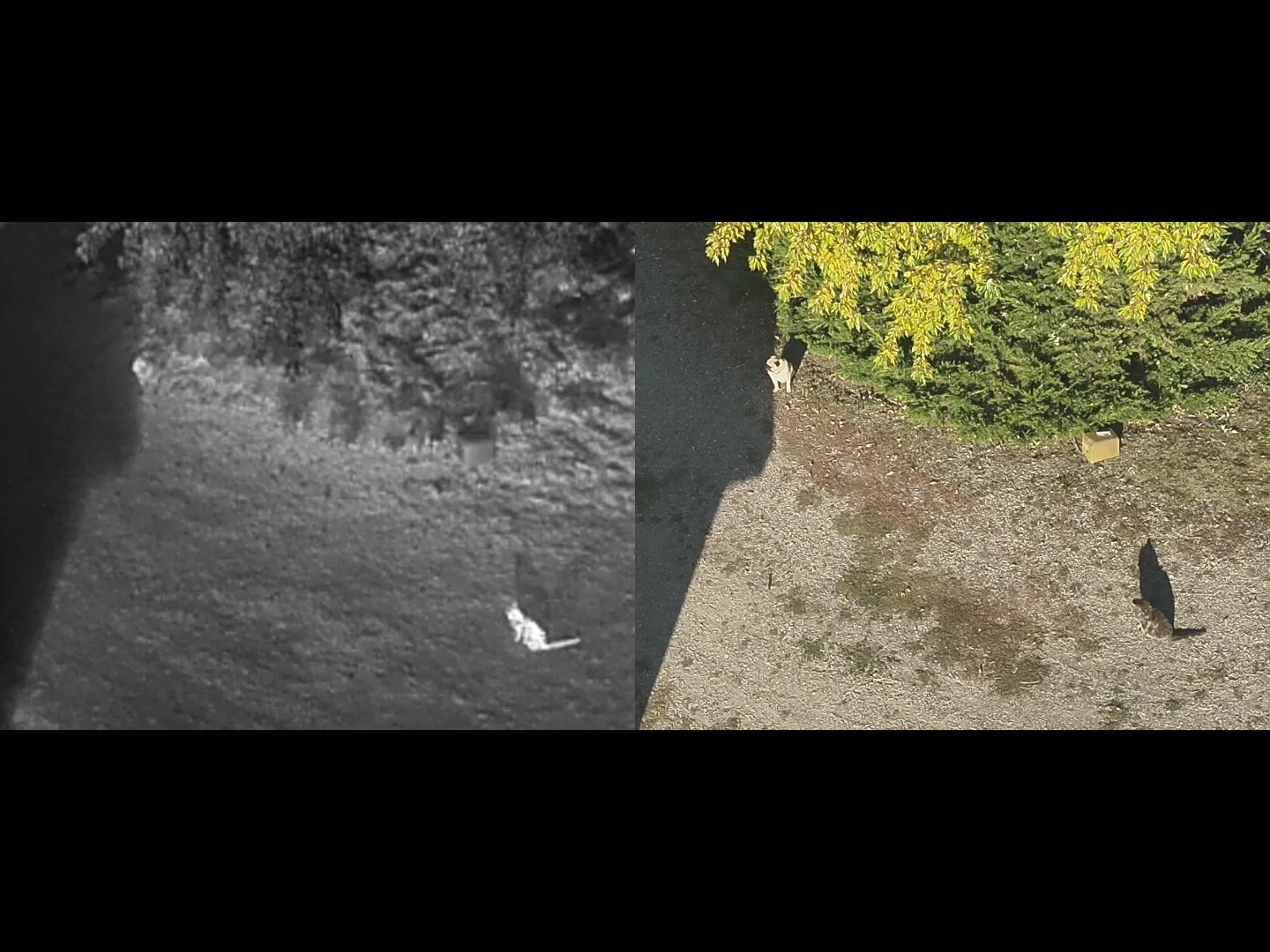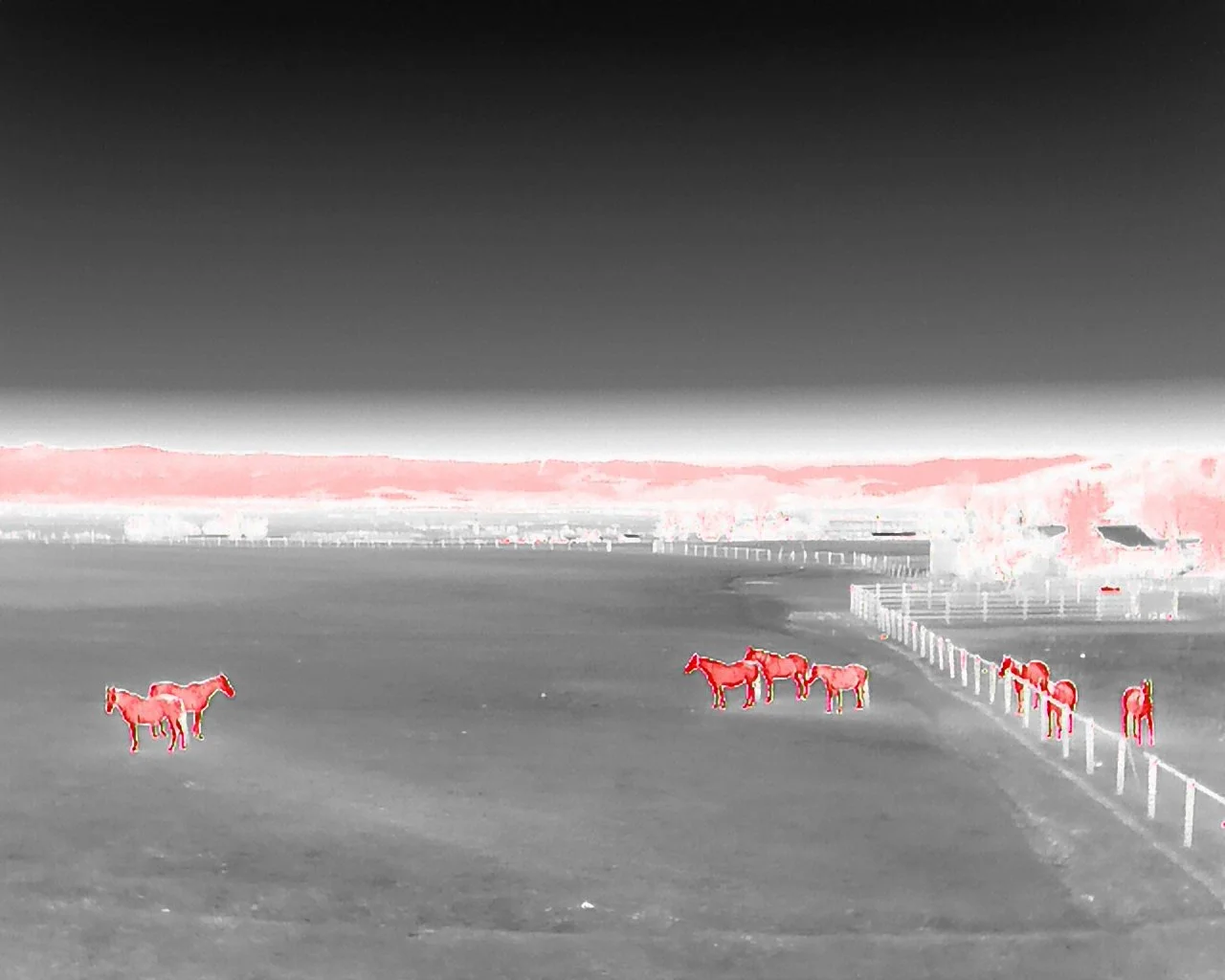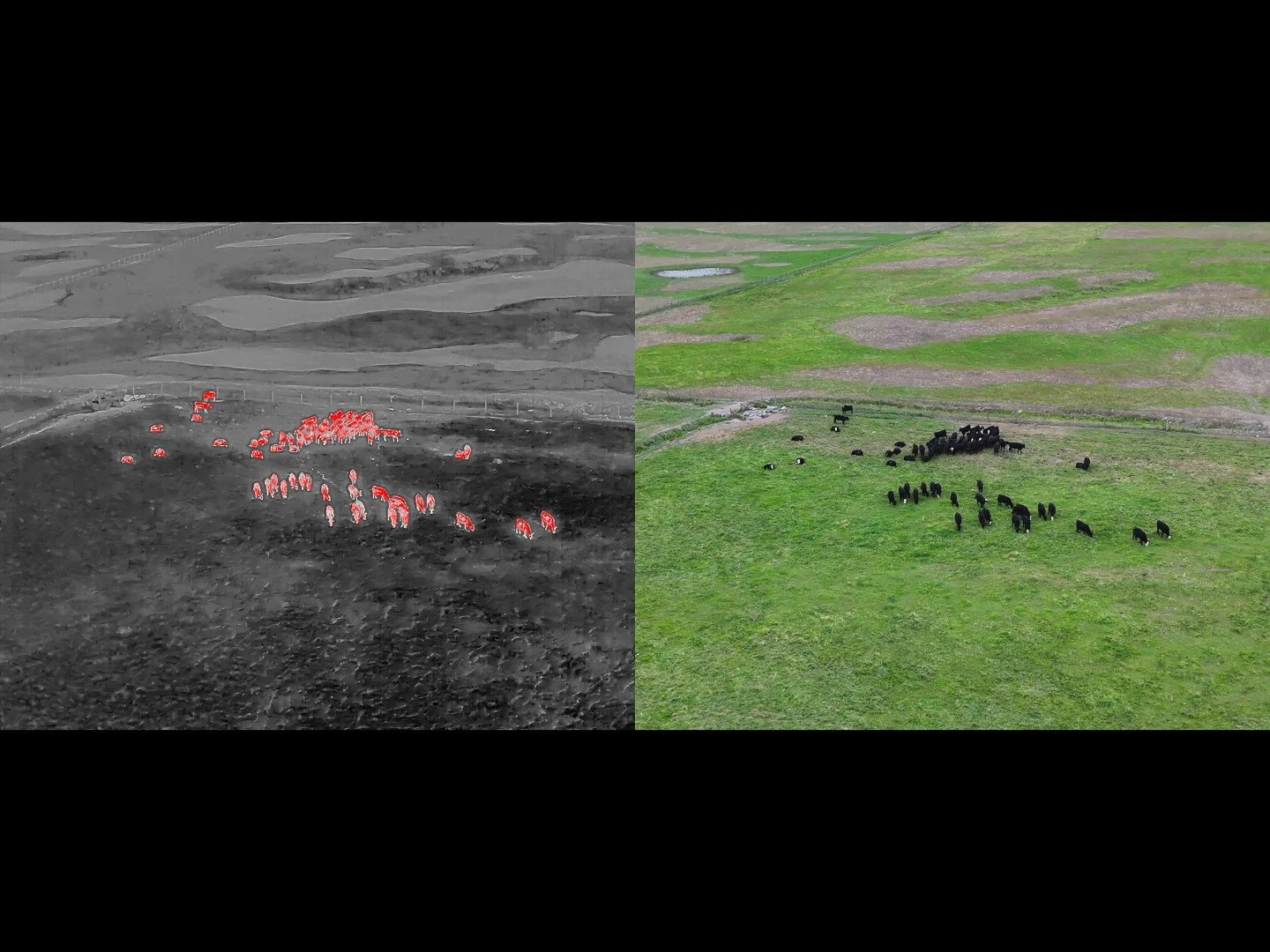Pet & Livestock Recovery
Use Thermal Drones to Find Your Animals
Bring Home Your Missing Animals
When an animal goes missing, every minute matters. Our skilled pilots and advanced thermal drones provide rapid aerial searches that can scan large areas in minutes, even after dark or in difficult terrain. Whether it’s a family pet or valuable livestock, we use cutting-edge technology to help bring these animals home safely and reduce losses for owners and ranchers.
Helping Pet Owners
When a pet goes missing, speed is critical. Thermal drones can scan large areas in minutes, detecting a pet’s heat signature even in the dark or through brush and tall grass. This allows us to locate lost dogs and cats faster and more effectively than traditional ground searches, giving you peace of mind and increasing the chances of a safe recovery.
Helping Livestock Owners
Locating stray cattle or horses doesn’t have to take hours on horseback or ATVs. Our thermal drones can quickly identify livestock across wide pastures, rugged terrain, or heavy cover—day or night. Whether recovering a stray or assisting in a roundup, drones provide ranchers with an efficient, low-stress solution that saves time, reduces losses, and protects valuable animals.
Understanding the Limits of Thermal Drones
While thermal drones are a powerful tool for locating lost animals, they are not a guarantee. Success depends on factors like weather, terrain, animal movement, and how quickly a search begins. In hot daytime conditions, dense cover, or when too much time has passed, thermal imaging may be less effective. We believe in being transparent with our clients—drones can greatly improve recovery chances in the right situations, but they are just one tool among many.
Factors That Increase Success
Fast Response Time - starting searches sooner limits the distance an animal can travel
Weather - cool, cloudy weather or snow covered ground improves thermal contrast, making animals easier to see
Time of Day - if the weather isn’t cool & cloudy, then early morning and late evening searches work best for finding thermal signatures, however a day-time “visual” (non-thermal) search can still be effective if in open terrain
Animal Size - larger animals like medium to large sized dogs, cattle and horses are easier to spot; although if the conditions are right and the animals are in the open, even small animals can still be very easy to spot
Animal Behavior - some animals are more likely to stick close to home or are more likely to stay moving out in the open where they are easier to see
Known Locations - providing a last known location helps establish a search area
Terrain - open terrain like pastures, hillsides, or sparse woods make it easier to see to the ground
Access - having permission to search the area without restrictions
Competing Heat Sources - less competing heat signatures in the area such as livestock, pets, wildlife and animal sized rocks helps to isolate the animal being searched for (rocks that have been in the sun retain heat for a long time)
Rural Areas - open landscapes with minimal houses reduced privacy concerns for neighbors when searching
Factors That Decrease Success
Slow Response Time - starting searches later can increase the distance an animal can travel
Weather - hot, humid weather decreases thermal contrast, making animals harder to see; bad weather such as rain, snow or fog prevents flight operations
Time of Day - unless the weather is cool & cloudy, then day time searches make it very hard to find specific heat signatures, however a day-time “visual” (non-thermal) search can still be effective if in open terrain
Animal Size - smaller animals like small dogs and cats can be harder to spot; although if the conditions are right and the animals are in the open, even small animals can still be very easy to spot
Animal Behavior - some animals are more likely to roam far outside of the search area or hide underneath objects or indoors.
Known Locations - not knowing a last known location makes it hard to establish an effective search area
Terrain - dense forest canopies and heavy brush make it harder to see to the ground
Access - not having permission to search nearby areas limits the search area
Competing Heat Sources - more competing heat signatures in the area such as livestock, pets, wildlife and animal sized rocks makes it harder to isolate the animal being searched for (rocks that have been in the sun retain heat for a long time)
Urban Areas - Unfortunately we can not search over neighboring private residences for privacy reasons
How much does it cost?
Providing drone recovery requires specialized equipment, licensed & insured pilots, careful planning, travel, and field time. Charging for this service ensures we can maintain high-quality gear, cover operating costs, and continue offering reliable recovery support to pet owners and ranchers when they need it most.
Prices And Descriptions of Services
Base Thermal Search & Locate – $300 base fee
Includes 2 hours of “in-the-air” search time
Additional Search Time – $50 per 30 minutes
If requested
Remote Access Fee – $50 (minimum) up to $ 250 (maximum)
Required if the drone can’t be flown from the operator's vehicle. The operator must remain within visual line of sight of the drone which is not always possible from the road, depending on location. The search equipment is heavy and fragile, making off road travel more difficult. Minimum charge is $50 to leave the vehicle, with a maximum of $250 and 2 miles from the vehicle. The fee depends on distance, elevation gain, terrain, ground cover, snowcover, etc. and will be assessed after arriving at location.
Travel Fee – $2 per mile
Distance from Missoula to Search Location with the first 25 miles FREE
Success Bonus – $100
Charged if visual confirmation and GPS coordinates are provided. This saves you money if we can’t locate your animal.




